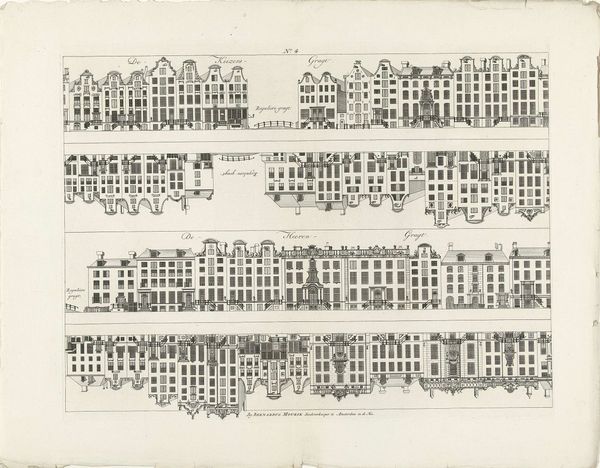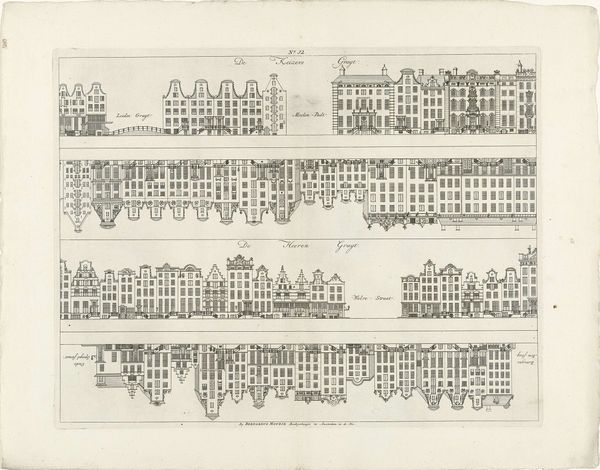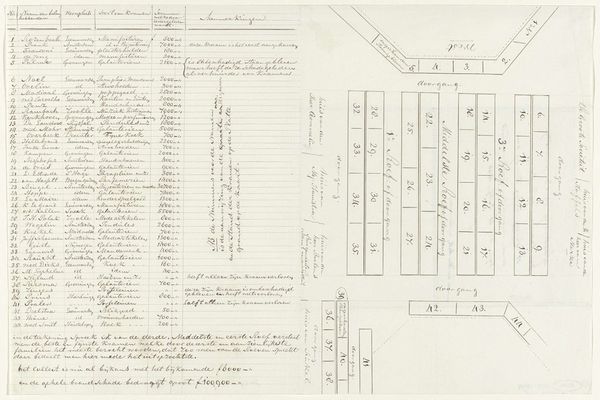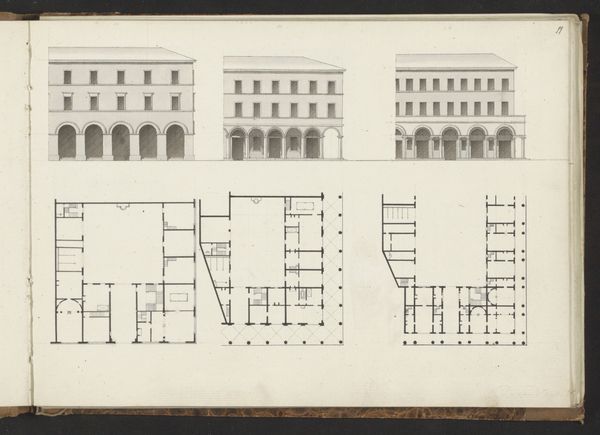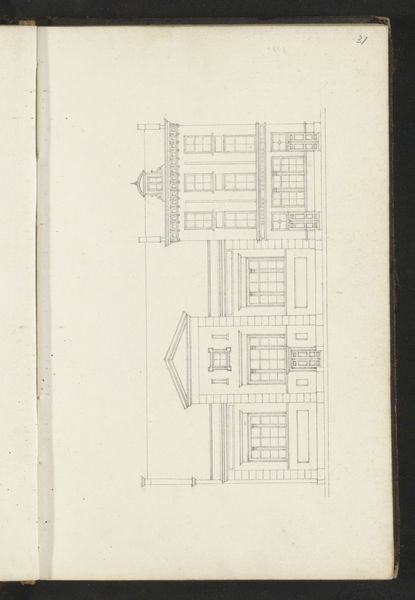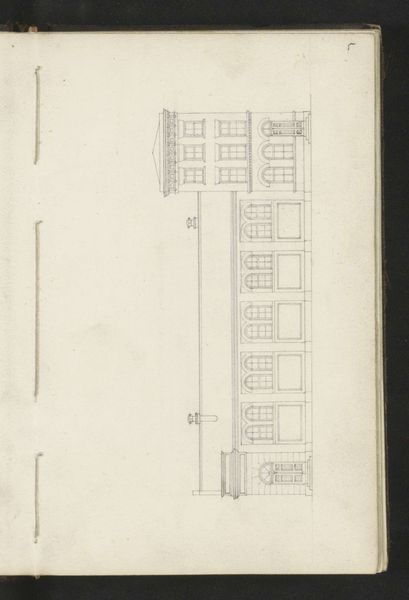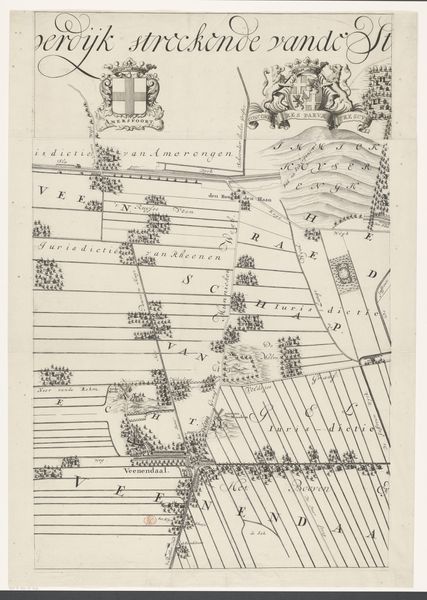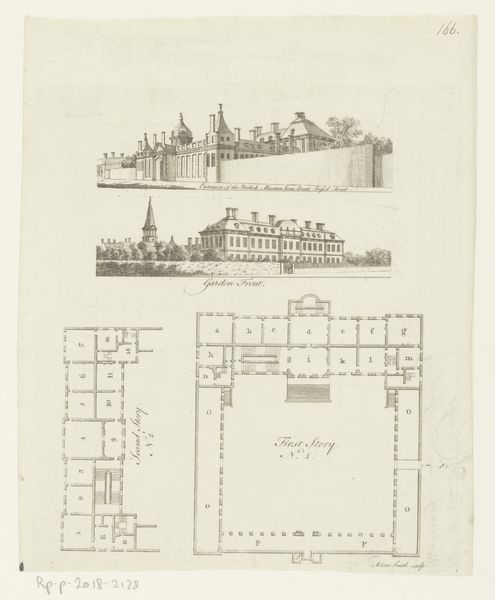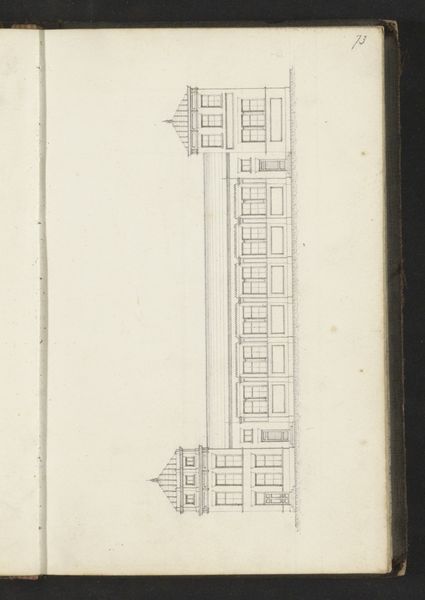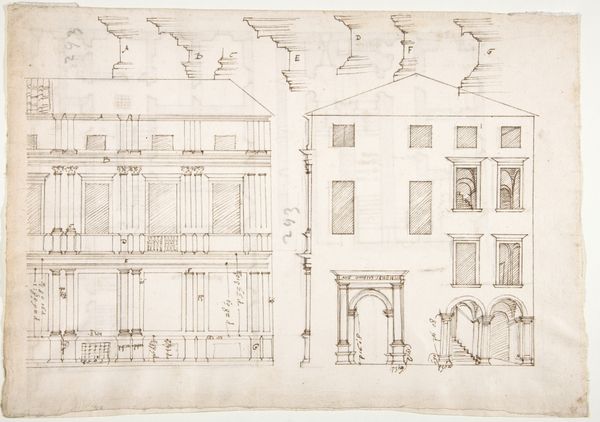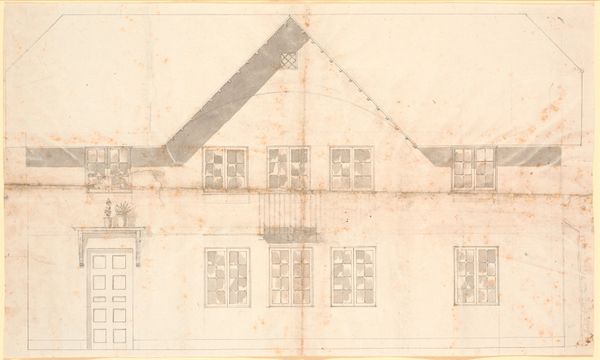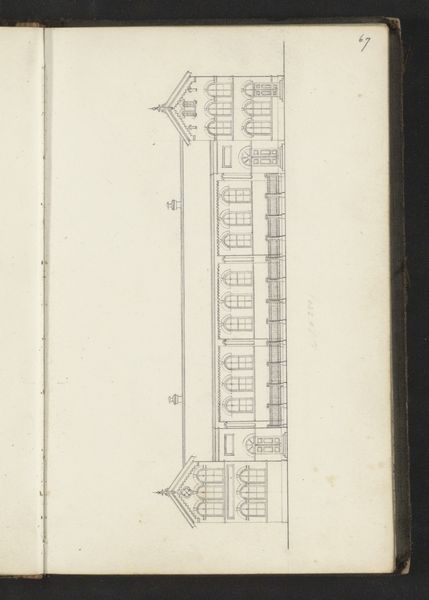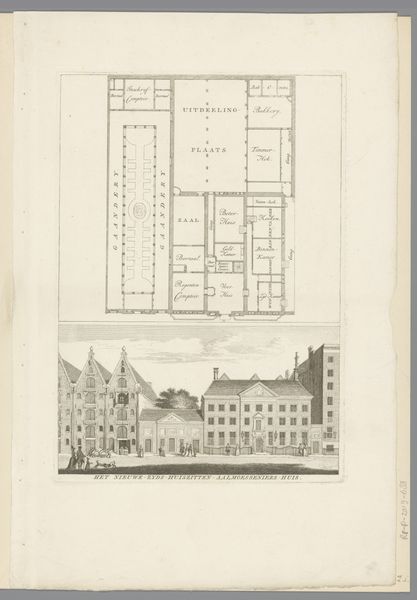
Gevels van huizenrijen aan de Keizersgracht van de Binnen-Amstel naar de Utrechtsestraat en de Herengracht van de Binnen-Amstel naar de Utrechtsestraat 1768 - 1771
0:00
0:00
drawing, print, engraving, architecture
#
drawing
#
neoclacissism
# print
#
architectural drawing
#
cityscape
#
engraving
#
architecture
Dimensions: height 375 mm, width 490 mm
Copyright: Rijks Museum: Open Domain
Curator: Looking at this meticulous engraving from 1768-1771 by Caspar Jacobsz Philips, we see elevations of canal houses on the Keizersgracht and Herengracht in Amsterdam. It’s titled “Gevels van huizenrijen aan de Keizersgracht van de Binnen-Amstel naar de Utrechtsestraat en de Herengracht van de Binnen-Amstel naar de Utrechtsestraat”. What are your first thoughts? Editor: It’s incredibly precise! Almost like a technical document, yet there's an underlying uniformity and rigidness. The houses all lined up remind me of regimented soldiers on display. There’s an implied order, but for whom was it made? Curator: Indeed. It exists at an interesting nexus. The neoclassical style that was popular in this period often represented control and stability, concepts attractive to the elite who sought to legitimize and cement their place in society. Cityscapes like these served not just as documentation but also as idealized portraits of urban progress. It represents a very specific kind of power, a claim to space. Editor: And we need to consider who is visible and who is hidden in that claim. While we gaze upon the architecture, who built it, who maintains it, and who were pushed out to create such a symmetrical scene? We must critically examine these cityscapes not just as representations of beauty but as artifacts documenting complex social dynamics of wealth accumulation. Curator: Absolutely. Looking closer, you see slight variations between the facades. These variations, even within the overarching architectural style, highlight individual wealth and status within that larger societal order. Patrons displayed their affluence through subtle yet impactful architectural decisions. It underscores how art often operates, reflecting both individual aspirations and communal norms. Editor: The seeming neutrality of these lines becomes quite loaded when viewed that way. The engraving material, I suppose, further emphasizes the idea of permanence and enduring societal structure—whose narratives get archived and celebrated? Philips’ artwork invites us to look at Amsterdam through a historical lens, yes, but it implores us to interrogate the legacy of inequality coded into the urban landscape. Curator: Precisely. It's a reminder that art provides an insight not just into aesthetics, but into the cultural and power dynamics of a given time. Editor: Ultimately it serves as an important tool to look at social structures with a critical lens. The picture shows us more than pretty facades.
Comments
No comments
Be the first to comment and join the conversation on the ultimate creative platform.
